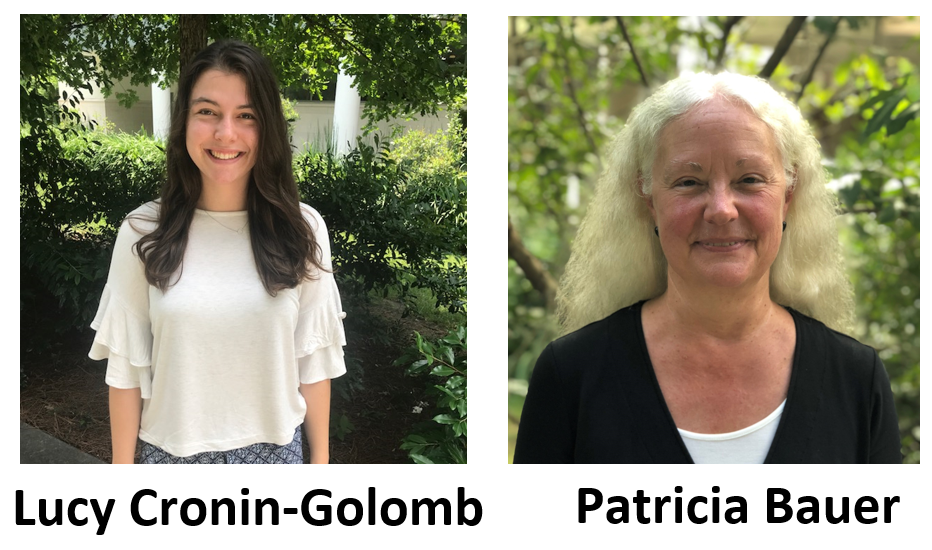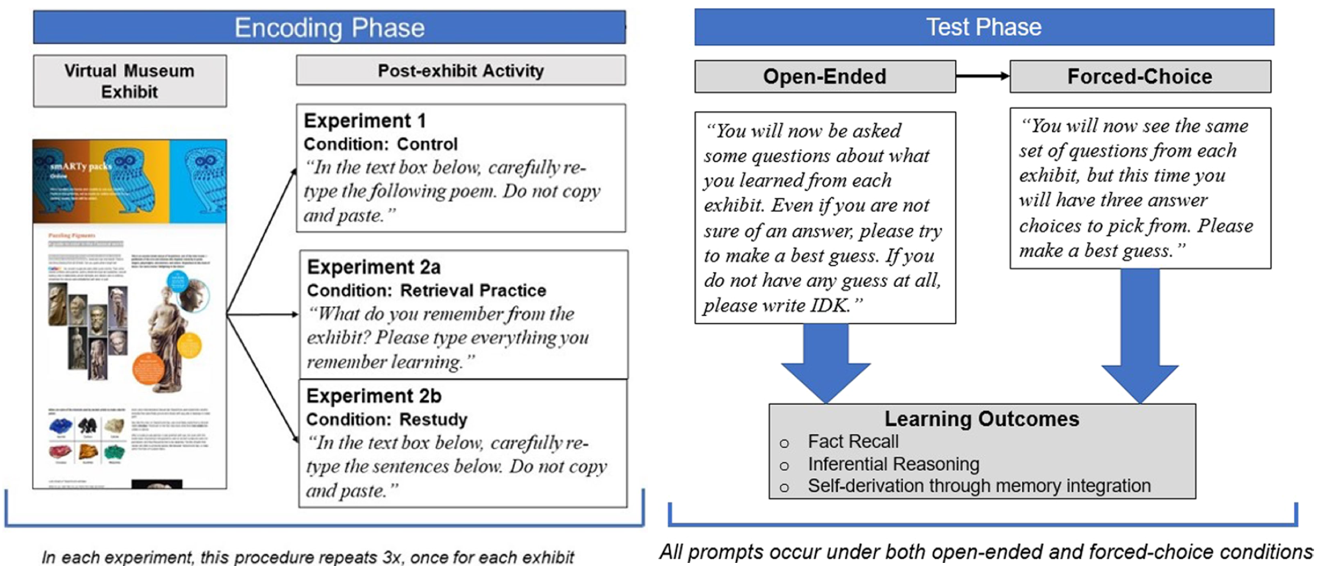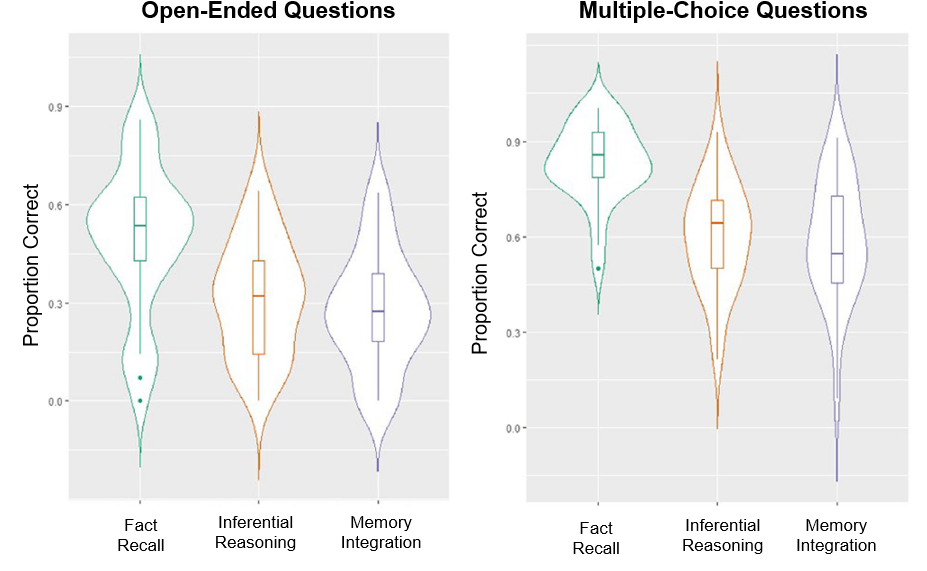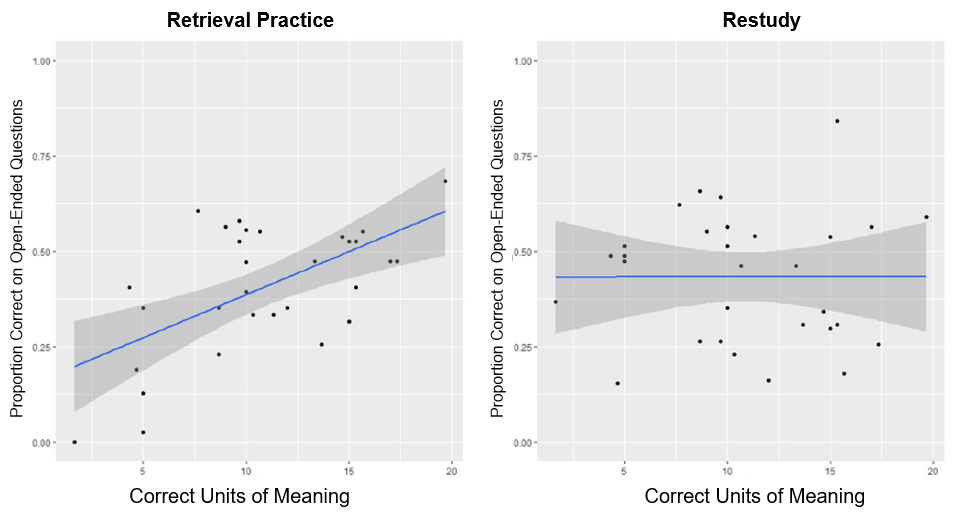Whenever I visit a new city, one of my favorite things to do is go to the local natural history museum. I love seeing every color of the rainbow expressed in our earth’s gems and minerals, walking among the models of whale and dinosaur skeletons, and feeling humbled by the vastness of our universe.
As a learning scientist, I’m often thinking about how students regulate their own learning and prepare for tests in formal educational settings, like a university classroom. But so much of our lifelong learning takes place in informal, naturalistic settings – while we listen to podcasts, read magazine articles, or when we engage with exhibits like the ones at natural history museums that I enjoy so much. In these environments, we decide what we want to attend to, encode, and eventually incorporate into our knowledge bases. How do people learn from these environments?

Lucy Cronin-Golomb (Twitter) and Patricia Bauer (pictured above) set out to answer this question by focusing on one such naturalistic learning environment: virtual museum exhibits. In a set of experiments published in the Psychonomic Society journal Cognitive Research: Principles and Implications, they investigated the kind of information people extract from such exhibits.

To do so, undergraduate psychology students “visited” three virtual exhibits from a real art history museum – one on Native American footwear, one on colors in the classical world, and one on snakes in ancient Egypt. These exhibits were each about 8 pages with about 14 pictures. Students could spend as long as they wanted engaging with the exhibits (learners spent about 3-5 minutes across experiments).
Following this “encoding phase” (see figure above), students engaged in a brief “post-exhibit activity” – a distractor task that involved copying a poem. Then, students moved on to a surprise “test phase,” which included open-ended and multiple-choice questions about information from the exhibits. These tests assessed students’ recall of facts (e.g., “What does the name ‘Mehen’ mean?”), inferential reasoning (e.g., “What kind of natural materials might Native Americans use to dye porcupine quills?”), and memory integration (i.e., questions that required students to derive information by combining across two pieces of information learned within the exhibit).

Although there was quite a bit of variability in performance on the tests, the authors found that students do extract information from virtual museum exhibits (see figure above). Unsurprisingly, fact recall was the most accessible to all students, whereas inferential reasoning and memory integration was a bit more challenging.
In a follow-up experiment, the authors investigated how re-engagement with the museum material would influence learning. This time, learners on Prolific engaged with the virtual exhibits during an encoding phase, and the post-exhibit activity provided them with opportunities to engage in either retrieval practice (i.e., write down as much as you can remember) or restudy (i.e., retype information presented). The authors used a yoked protocol such that learners in one group restudied information generated by the retrieval practice group. The yoked design allowed for a comparison of retrieval practice and restudy, because the content retrieved and restudied was identical. As in the first experiment, learners took a surprise test on the exhibits.
Interestingly, no group differences between participants who engaged in retrieval practice versus restudy. In fact, comparisons across experiments revealed no differences for those who re-engaged with the material versus those who did not – performance on the final test followed a similar pattern of results. Perhaps this speaks to the high-quality nature of the online museum exhibits.
According to Cronin-Golomb:
“We were surprised to see that learners who did not have explicit access to such strategies learned just as much from the virtual exhibits as those who did. Why might this be? Maybe the rich, salient nature of the virtual exhibits inspires learners to spontaneously engage in learning strategies on their own, so they don’t need researchers to prompt them to restudy or retrieve information!”

The authors further investigated individual differences in test performance. First, they broke down ideas generated during retrieval practice into their smallest “units of meaning.” For example, a response such as, “I remember learning that statues made out of bronze/ change color to green/ because of a process called oxidation,” contains three correct units of meaning. Then, they looked at the relationship between units of meaning and performance on both the open-ended and multiple-choice questions. Units of meaning generated during retrieval practice predicted learning outcomes, whereas restudy of those units did not (see figure above).
Overall, these outcomes provide initial evidence that people do learn from virtual museum exhibits. This result is particularly exciting for museums hoping to take advantage of the unique benefits of online learning, including increased accessibility and flexibility with visitation timing. As much as I enjoy visiting new places, it’s nice to know I can learn from museum exhibits without ever leaving my couch!
Featured Psychonomic Society article
Cronin-Golomb, L. M., & Bauer, P. J. (2022). Support for learning under naturalistic conditions. Cognitive Research: Principles and Implications, 7(1), 1-20. https://doi.org/10.1186/s41235-022-00435-0
